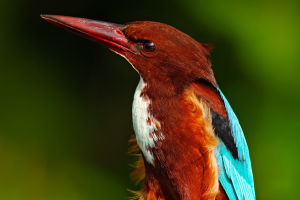Starfish are star-shaped animals that belong to the class Asteroidea. They are also known as sea stars or asteroids. There are about 1,900 species of starfish that live on the seabed in all oceans of the world. Starfish have five or more arms that radiate from a central disc.
They have tube feet on their underside that help them move, sense, and capture food. They also have eyespots at the end of each arm that can detect light and dark.
Starfish are not fish but echinoderms, which means they are related to sea urchins, sand dollars, and sea cucumbers. They have a water vascular system that pumps seawater through their body and powers their tube feet. They also have a remarkable ability to regenerate lost arms or even grow a new body from a single arm.
Starfish have various adaptations to survive in different habitats. Some starfish live in shallow waters near coral reefs or rocky shores, while others live in deep-sea environments such as hydrothermal vents or cold seeps. Some starfish can tolerate extreme temperatures, salinity, or pressure.
Some starfish have spines, plates, or chemicals to protect themselves from predators. Some starfish can change their color or shape to camouflage themselves.
Starfish feed on different types of prey depending on their species and habitat. Some starfish are carnivorous and eat clams, oysters, snails, fish, coral polyps, or other echinoderms. Some starfish are herbivorous and eat algae or organic detritus.
Some starfish are omnivorous and eat both plant and animal matter. Starfish use their tube feet to pry open their prey’s shells or hold them down. Then they evert their stomach out of their mouth and digest their food externally.
Starfish have various roles in marine ecosystems. They are important predators that control the population of bivalves and other prey species. They are also prey for fish, crabs, seabirds, and otters. They are indicators of environmental health and biodiversity. They are part of nutrient cycles and food webs.
Starfish also have various uses for humans. They are collected for scientific research, education, or the aquarium trade. They are harvested for food, medicine, or fertilizer in some cultures.
Starfish can be found covered in a smooth surface or covered in spines or bumps. They come in a variety of colours, shapes, and sizes. The smallest starfish is less than 1 cm across, while the largest starfish can reach up to 1 meter across. Some starfish have only five arms, while others can have up to 40 arms.
Starfish are opportunistic feeders that can eat almost anything they find. They have a mouth on their underside and an anus on their upper side. Some starfish can swallow their prey whole, while others can extend their stomach out of their body and wrap it around their prey. Some starfish can even digest food outside their body by secreting enzymes.
Starfish face numerous threats within their own habitats such as predators, parasites, diseases, competition, and natural disasters1. They also face human-induced threats such as overharvesting for food or souvenirs, pollution from chemicals or plastics, habitat loss from coastal development or dredging, climate change that affects water temperature or acidity, and invasive species that compete with them or introduce new pathogens13.
Starfish are fascinating creatures that deserve our respect and protection. They face threats such as overharvesting, pollution, habitat loss, climate change, and invasive species. humans can help conserve them by reducing impact on the ocean and supporting conservation efforts


